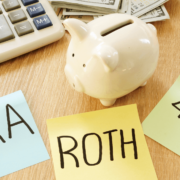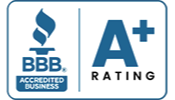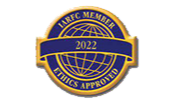The Power of Compound Interest: How to Protect and Grow Your Retirement Nest Egg
From Warren Buffett and Charlie Munger to Albert Einstein and Chuck Akre, some of the greatest minds in finance (and science) have praised the power of compound interest. But what exactly makes it so powerful—and how can you put this timeless strategy to work for your own financial future?
If you’ve spent the last several decades investing—whether in stocks, real estate, or even art—you likely have a substantial nest egg. The question now is: How do you protect it while helping ensure it continues to grow wisely through retirement? Understanding compound interest may be your best-kept secret.
What Is Compound Interest—Really?
Most people believe their money is compounding simply because their investments are increasing in value. But true compounding requires more than appreciation—it requires reinvestment.
To put it simply, compound interest means earning interest on your interest. When the returns on your investments—be it interest, dividends, or capital gains—are reinvested instead of withdrawn, those earnings generate their own earnings. Over time, this cycle of reinvestment accelerates wealth creation in ways that simple growth cannot.
Unfortunately, many investors believe they are benefiting from compound interest when, in fact, their portfolios are only experiencing passive appreciation, which is often inconsistent and susceptible to market volatility. Without a reinvestment mechanism, that growth is linear, not exponential.
Famous Names and Faces
Influential figures like Warren Buffett, Charlie Munger, and even Albert Einstein have long touted compound interest as one of the most powerful forces in finance. Why? Because it rewards patience, consistency, and time—allowing your money to grow not just on your initial investment, but on the interest it earns over time:
“The first rule of compounding: Never interrupt it unnecessarily.” – Charlie Munger
“The ability to earn earnings upon earnings is essentially the definition of compounding.” – Chuck Akre
“Compound interest is the eighth wonder of the world. He who understands it, earns it; he who doesn’t, pays it.” – Albert Einstein.
This snowball effect can turn modest savings into significant wealth, making it a cornerstone of long-term financial success. Whether you’re building retirement income or teaching your kids about saving, understanding compound interest is key to unlocking real financial momentum.
Why Compound Interest Matters in Retirement
During your working years, your primary focus is on accumulation, saving, and growing your wealth. But once you retire, your financial strategy needs to shift dramatically. You’re no longer just building a pile of assets—you’re relying on them to provide sustainable, lifelong income.
This is where compound interest can play a transformative role. With the right strategies, it allows your retirement portfolio to continue working for you, creating new earnings without taking on unnecessary risk.
Income-generating investments that can enable compounding include:
- Dividend-paying stocks
- Bond-like fixed-income instruments
- Real estate investment trusts (REITs)
- Managed income funds and ETFs
These types of investments provide regular income, which can then be reinvested, allowing for consistent, measurable compounding even in retirement.
Understanding “Returnless Risk”
One of the most common pitfalls retirees face is what we call “returnless risk”—taking on high levels of market exposure in hopes of large gains, without any built-in income or return mechanism.
For example, a portfolio packed with growth mutual funds or tech-heavy stocks might look strong on paper, but if those assets aren’t generating real income, then you’re relying entirely on market timing and volatility. That’s not a sustainable strategy for retirement income.
In one case, a client of ours held a 401(k) with several growth stocks and mutual funds, yet none of those assets provided reinvestable income. When retirement hit, the portfolio’s lack of yield left them vulnerable. By contrast, a portfolio with structured income products generating even a conservative 6–8% annual return can create a more stable, compoundable income stream—one that can support your lifestyle with much less stress.
The Silent Wealth Killer: Fees
Compounding doesn’t only depend on reinvestment—it depends on retaining as much of your return as possible. That’s why excessive fees can be so damaging.
Let’s look at the numbers: A $1.5 million portfolio with an annual 2% advisory or fund fee will lose over $331,000 in potential earnings over a 10-year period. That’s not just a minor expense—it’s a major wealth leak. Fees siphon off returns that could otherwise be compounding for your benefit.
At Agemy Financial Strategies, we believe in transparent, fiduciary-based guidance. We don’t believe in paying middlemen, hidden fees, or cookie-cutter portfolios that don’t serve your best interests.
Compound Interest ≠ Growth Alone
One of the most common misconceptions we hear is the belief that growth is the same as compounding. But here’s the truth: Growth can occur without compounding, and compounding can occur without explosive growth.
Owning a stock that doubles in price may seem like a big win, but unless you’re capturing consistent dividends or generating reinvestable returns, that “growth” is fleeting. Real compounding happens when income is systematically put back to work, over and over again.
Ask yourself:
- Am I relying on market hope or a disciplined income strategy?
- Is my portfolio built to generate reliable returns, or is it simply chasing headlines?
- What is the purpose of my money now that I’m retired, or nearing retirement?
Protecting Your “Pile”: Beyond Compounding
At Agemy Financial Strategies, we often talk about “protecting your pile”—and we don’t mean hiding it under a mattress or stuffing it in a low-yield savings account. True protection is about making your money work smarter, not harder.
Additional strategies we help support you with include:
- Global diversification to hedge against U.S. market risks
- Currency diversification to protect against inflation and dollar weakness
- Strategic ownership of gold—as a store of value, not a compounding asset
- Low-fee, high-value investment products that prioritize income and growth
Remember: the goal isn’t to become ultra-conservative or fearful of investing. It’s to be strategic, measured, and intentional.
The Retirement Shift: From Accumulation to Preservation + Income
Retirement is not just a date—it’s a transition. And that transition should reflect a significant shift in your investment mindset.
Where you once chased high returns, you now need to think about how to preserve your assets and generate income from them. Compound interest, when used effectively, allows you to maintain both goals: security and growth.
You’ve already climbed the mountain of accumulation. Now it’s time to descend safely, with a plan that doesn’t depend on hope, speculation, or volatility.
Final Thoughts: It’s Time to Be Prudent
We’re not saying you have to change your entire portfolio overnight. But we do believe this is a time to ask yourself tough questions:
- Is your portfolio designed to compound and generate sustainable income?
- Are you taking on risk without enough built-in return?
- Are your fees eroding your long-term wealth?
At Agemy Financial Strategies, we help clients across Connecticut and Colorado build retirement strategies grounded in education, purpose, and clarity. If you’re ready to make smart decisions that prioritize your long-term success, we invite you to get a second opinion—because protecting your pile starts with understanding how compounding really works.
📞 Ready to Learn More?
- Call us at 800-725-7616 or visit agemy.com.
- Love to read? Download our free paper: “The Importance of Financial Defense.”
- Love to watch? Check out our dedicated Financial Strategies Podcast show on YouTube, ‘Protect Your Pile’ here.
It’s time to invest in income, not just growth.
More About Agemy Financial Strategies Can Help
At Agemy Financial Strategies, we believe your retirement strategy should be as unique as you are. Our team of fiduciaries works closely with pre-retirees and retirees to develop personalized, income-generating plans that harness the power of compound interest while minimizing unnecessary risk.
Here’s what sets us apart:
- Income-First Planning: We focus on creating sustainable, tax-efficient income streams that continue to compound and grow—even in uncertain markets.
- Fiduciary Approach: As fiduciaries, we are legally and ethically obligated to act in your best interest. That means no cookie-cutter portfolios or hidden agendas—just advice that puts your needs first.
- Smart Risk Management: We help clients identify unnecessary “returnless risk” and shift their portfolios toward strategies that align with their lifestyle, goals, and risk tolerance.
- Fee Transparency: We cut out expensive middlemen and mutual fund layers to help you keep more of what you’ve earned, allowing your money to truly compound.
- Education & Empowerment: Whether you’re 50 or 75, our goal is to help you understand your plan, your options, and your income strategy. Because when you know better, you do better.
With offices in Connecticut and Colorado, our team is here to help you build a future rooted in clarity, confidence, and smart financial stewardship.
Frequently Asked Questions (FAQ)
Q1: What’s the difference between compound interest and simple interest?
A: Simple interest is calculated only on the principal amount you invest. Compound interest is calculated on the principal and the interest that accumulates over time, making it a powerful wealth-building tool, especially in retirement income strategies.
Q2: Can I still benefit from compound interest if I’m already retired?
A: Yes. While compounding works best over long timeframes, retirees can still benefit by using income-generating assets that reinvest earnings or provide steady cash flow. The key is having a plan designed around your timeline and needs.
Q3: What kinds of investments support compound interest?
A: Investments that pay recurring income, such as dividend stocks, bonds, structured notes, etc., allow your earnings to be reinvested and compounded. Growth-only assets like non-dividend stocks may not offer the same compounding benefit unless actively managed.
Q4: Are high fees really that damaging to my retirement portfolio?
A: Absolutely. Just a 2% annual fee on a $1.5 million portfolio can erode over $300,000 in potential earnings over 10 years due to lost compounding. Reducing costs and improving efficiency are key ways we help protect and grow your wealth.
Q5: How do I know if I need to make changes to my current retirement strategy?
A: If you haven’t reviewed your portfolio in the last 12 months, if your investments aren’t generating income, or if you’re unsure about the risks you’re taking, you likely need a second opinion. Agemy Financial Strategies offers complimentary reviews to help you assess whether your money is truly working for you.
Disclaimer: This content is for educational purposes only and should not be considered financial or investment advice. Please consult with the fiduciary advisors at Agemy Financial Strategies before making any investment decisions.












